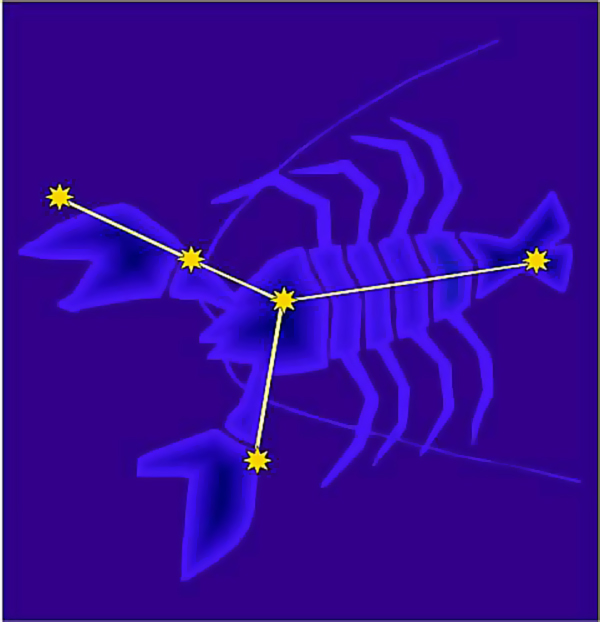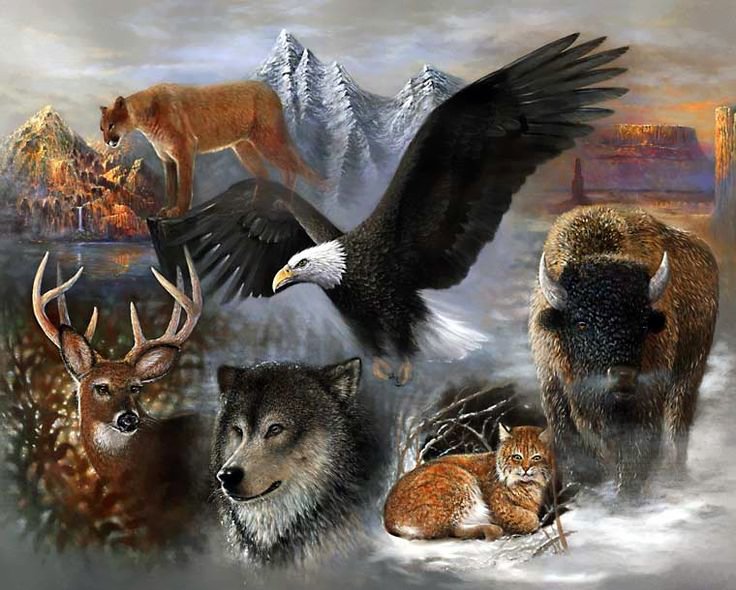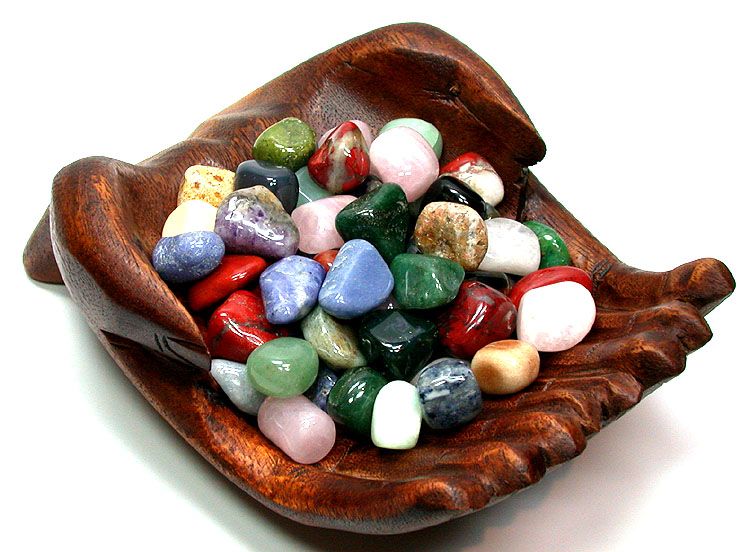Cancer Mythology
- Details
- Written by CrystalWind.ca
- Views: 11417

The Mythology of Cancer: A Celestial Tale of Loyalty and Sacrifice
Among the twelve zodiac signs, Cancer often lingers in the shadows, its quiet presence overshadowed by the boldness of Leo or the mystique of Scorpio.
Yet, the mythology of Cancer, rooted in ancient Greek narratives, reveals a story of profound loyalty and sacrifice. Without the discovery of the Scriptures of Delphi, unearthed centuries ago, Cancer’s tale might have remained a minor anecdote in the saga of Hercules—a giant crab crushed in a fleeting moment of heroism. Instead, these ancient texts offer a richer, more compelling narrative, transforming Cancer into a symbol of enduring devotion and celestial honor.
The Classical Narrative: Carcinus and the Hydra
In the traditional Greek mythology, Cancer’s story unfolds within the epic of Hercules, the demigod renowned for his twelve labors. These labors were a penance for a tragic crime: driven mad by Hera, queen of the Olympian gods, Hercules slew his wife and children. Hera, consumed by jealousy over Zeus’ infidelity, designed the labors to destroy Hercules, hoping the impossible tasks would claim his life. The second labor pitted Hercules against the Lernaean Hydra, a serpent-like monster with nine regenerating heads, born of the primordial deities Typhon and Echidna. Stationed in the marshes of Lerna, the Hydra guarded an entrance to the Underworld, its venomous breath and fiery gaze making it a formidable foe.
Hera, ever eager to sabotage Hercules, summoned Carcinus, a colossal crab with pincers capable of crushing stone. Her strategy was cunning: as Hercules battled the Hydra’s writhing heads, Carcinus would emerge from a nearby cave to distract him. The crab’s role was to unbalance the hero, giving the Hydra an opening to strike a fatal blow. For a moment, the plan succeeded. Carcinus clamped onto Hercules’ foot, its grip fierce enough to make the hero falter. But Hercules, fueled by divine strength, swiftly crushed the crab beneath his heel, ending its interference in an instant. He then turned his focus to the Hydra, using fire and sword to slay the beast.
Though Hera’s scheme failed, she was struck by Carcinus’ unwavering loyalty. In a rare act of compassion, she immortalized the crab as the constellation Cancer, placing it in the night sky alongside the Hydra. This tale, while poignant, casts Cancer as a minor player, its brief act of bravery overshadowed by its swift demise. The story lacks the depth one might expect from a zodiac sign associated with nurturing and protection, leaving scholars and storytellers yearning for a more substantial narrative.
The Delphic Revelation: Crios, Guardian of the Deep
The Scriptures of Delphi, attributed to the oracle of Apollo, provide a transformative perspective on Cancer’s mythology, elevating the crab to a heroic figure in Poseidon’s oceanic realm. In this narrative, the central character is Crios, a massive crab entrusted with guarding the Nereids, the sea nymphs revered as Poseidon’s daughters. Endowed with immortality by the sea god, Crios was a formidable protector, his obsidian shell gleaming in the ocean’s depths, his claws strong enough to rend coral and stone. His duty was not merely a task but a sacred charge, one he upheld with unyielding devotion.
The story takes a dramatic turn during the rise of Typhon, a monstrous giant whose rebellion against the Olympian gods sent most deities into hiding. Poseidon, like his peers, retreated, leaving Crios to safeguard the Nereids in his absence. The crab maintained a vigilant watch, ensuring the nymphs remained within the safety of a coral enclave. The Nereids, however, were spirited and independent, their confinement chafing against their desire for freedom. Believing Typhon’s wrath was confined to the heavens, a group of nymphs slipped away, venturing into the open sea.
Crios faced a dilemma: pursue the escapees and risk the safety of those who remained, or stay and uphold his primary duty. Choosing the latter, he sought the aid of Vamari, a giant squid whose name, ominously, translates to “Vampire Squid” in ancient tongues. Unbeknownst to Crios, Vamari was treacherous. When the squid overtook the runaway nymphs, he devoured them, returning to Crios with a fabricated tale of failure. The crab, sensing deceit in Vamari’s shifting gaze, confronted him. The ensuing battle was titanic, with Crios’ claws clashing against Vamari’s coiling tentacles, the ocean roiling from their struggle. After hours of combat, Crios prevailed, but his victory came at a grave cost. His shell was fractured, his limbs broken, and though immortality spared him from death, it condemned him to eternal pain.
When Poseidon returned, he found Crios, battered yet resolute, still guarding the remaining Nereids. Moved by the crab’s sacrifice, Poseidon alleviated his suffering and honored him by placing him among the stars as the constellation Cancer. This narrative recasts Cancer as a figure of heroic endurance, aligning with the zodiac sign’s astrological traits of loyalty and protection.
Cancer in the Tapestry of Greek Mythology
The dual myths of Carcinus and Crios reflect Cancer’s core themes of sacrifice and guardianship, but the sign’s connections to Greek mythology extend further. Consider the tale of Thetis, a sea goddess whose beauty was tempered by a prophecy: any son she bore would surpass his father in power. Fearing this, the gods shunned her, and Thetis wed Peleus, a mortal king. Their union produced seven sons, including Achilles, the near-invincible hero of the Trojan War.
Thetis, desperate to shield her sons from mortality, resorted to extreme measures. In one version, she burned away their mortal flesh in flames, believing the fire would render them divine. When Peleus discovered her incinerating Achilles, he seized the child by the heel, leaving that untouched portion vulnerable—hence the term “Achilles’ heel.” In another account, Thetis dipped Achilles into the River Styx, holding him by the heel to grant him invulnerability. Both stories underscore a mother’s fierce devotion, mirroring Cancer’s protective instincts and willingness to sacrifice for loved ones.
The crab itself held symbolic weight in ancient Greek culture. Its hard shell and tenacious grip evoked resilience and defense, qualities reflected in Cancer’s astrological profile. The crab’s association with water, a life-giving yet unpredictable element, further tied it to the emotional depth and intuition attributed to the zodiac sign.
Etymology and Astronomy
The name “Cancer” traces a linguistic lineage across ancient civilizations. In Latin, Cancer means “crab,” derived from the Greek Karkinos or Carcinus. This, in turn, connects to the Akkadian Allutu and Sumerian Al.lul, both meaning “crab.” These terms reflect the crab’s enduring significance as a symbol of tenacity and protection across cultures.
Astronomically, the Cancer constellation is faint, its stars dim compared to those of neighboring Gemini or Leo. Located in the northern hemisphere, it is best observed in spring, its most prominent feature being the Beehive Cluster (M44), a star cluster visible to the naked eye under clear skies. The constellation’s position near Hydra and Leo Minor ties it to its mythological roots, a celestial reminder of its role in the Greek pantheon. Though not the brightest, Cancer’s presence in the zodiac underscores its quiet strength, much like the crab’s unassuming yet resolute nature.
A Legacy in the Stars
The mythology of Cancer, whether through Carcinus’ fleeting bravery or Crios’ epic guardianship, reveals a figure defined by loyalty and sacrifice. These stories resonate with the zodiac sign’s modern identity as the nurturer of the zodiac, fiercely protective and deeply empathetic. The constellation Cancer, though subtle in the night sky, serves as a testament to the power of steadfast devotion. Why does this tale endure? Perhaps because it reminds us that heroism need not be loud or grandiose—sometimes, it’s the quiet acts of courage, like a crab standing guard over the sea, that echo through the ages.
© 2011-2025 CrystalWind.ca & Author | All Rights Reserved | No reproduction without permission | Awakening Souls Since 2008.
#CrystalWind #SpiritualJourney
Liked this article? Dive deeper into personal growth and wellness! Check out CrystalWind.ca for spiritual wisdom or explore AromaWorx.ca for natural well-being tips. Spread the positivity—share this with friends on their happiness journey!
Let’s Chat! Drop Your Thoughts Below! ![]()
Latest Articles
Dive into the Mystical World of the Crystal Wind Oracle Deck!
Get All the Enchanting Details Now!
NEW Expanded Boxed Edition!
Now with 58 Cards for Richer Wisdom!

Imagine a world of inspiration and healing, free for all—made possible by YOU!
Donate Now—Ignite the Magic at CrystalWind.ca!

Epilepsy - Finding A Cure
Your donation can make a difference!
Help us find a cure – donate now!
Unlock Your Light: Join Lightworkers Worldwide on CrystalWind.ca!
Articles: Hindu Mythology
Articles: Egyptian Mythology
Articles: Celtic Mythology
Articles: Norse Mythology
Articles: Compendium
Articles: Greek Mythology
Follow Us!
Featured This Month
Watermelon Tourmaline
Synonym: Rainbow Tourmaline The watermelon tourmaline is a rare variety t... Read more
Sweet Violet
Sweet Violet Faithfulness and modesty. “I will always be true to you.” Helps... Read more
The Vine: September 2nd - September 29th
The Autumnal Equinox ( Alban Elfed ) Celtic Symbol : The White Swan Read more
Crystals for Virgo
As the warmth of summer begins to soften into the crispness of autumn, the Sun... Read more
Virgo Mythology
The Virgo Myth In all of constellation mythology, few legends are as misund... Read more
Peridot: The Healer's Stone
Peridot has been used as a Power Stone for centuries. Peridot fosters emotio... Read more
Mabon Magic: Ideas For Fall Decoration And R…
Welcome (almost!) to Fall! We’re turning the Great Wheel once again, toward ... Read more
Sun in Virgo
An Overview of Sun Sign Characteristics for Virgo Virgo is guided by Mercur... Read more
Mabon in Modern Times: Fresh Takes on the Au…
The Mabon season begins somewhere around the 21st-22nd of September and cont... Read more













































